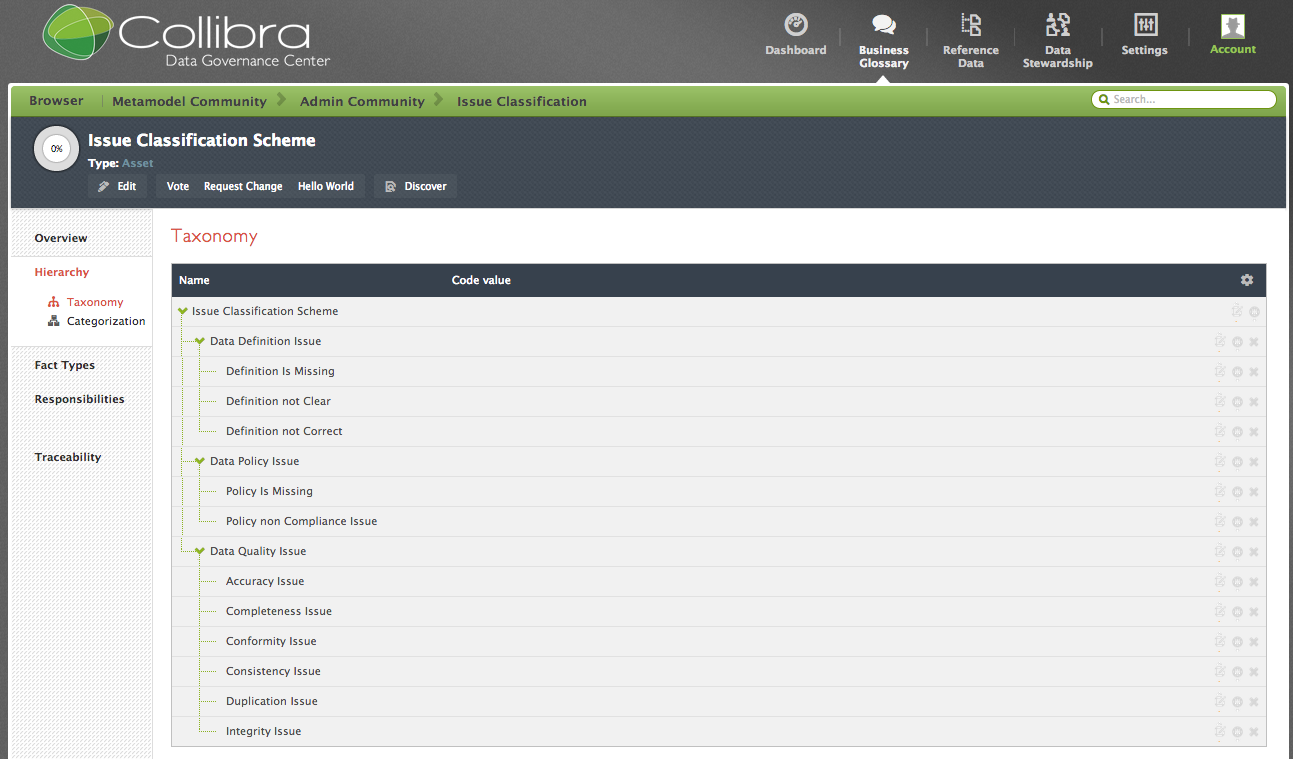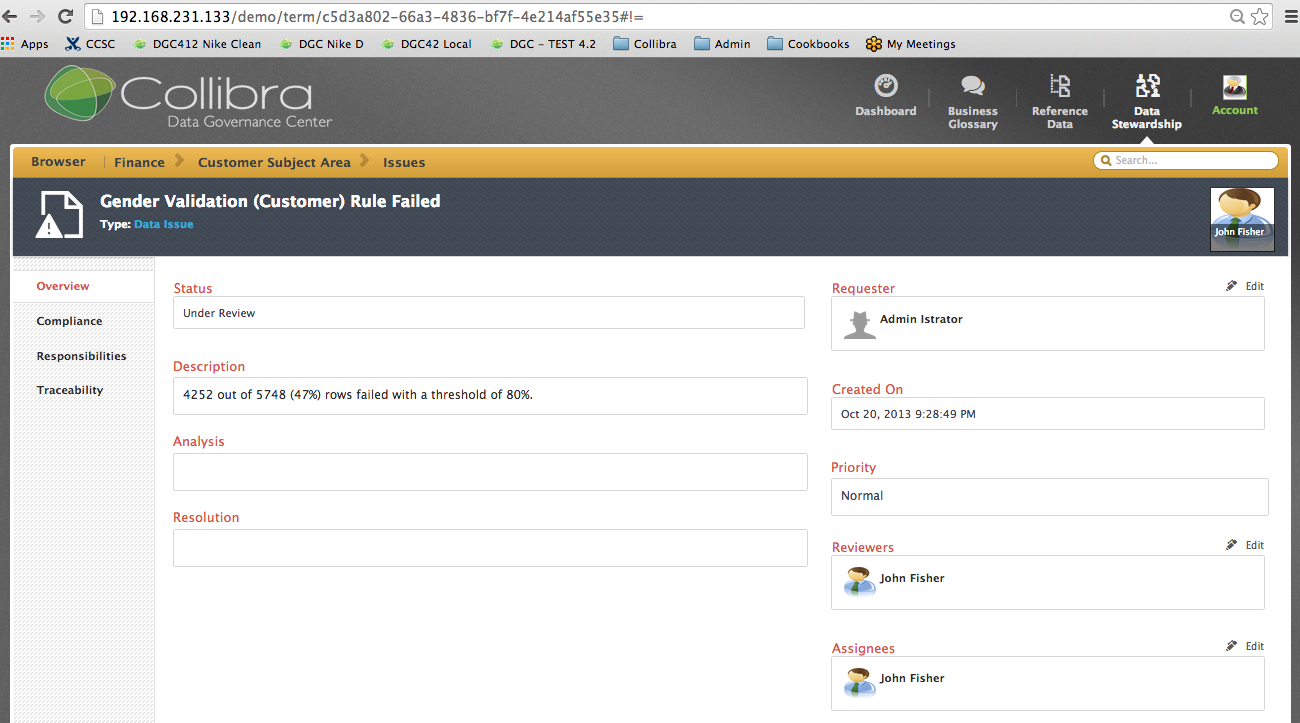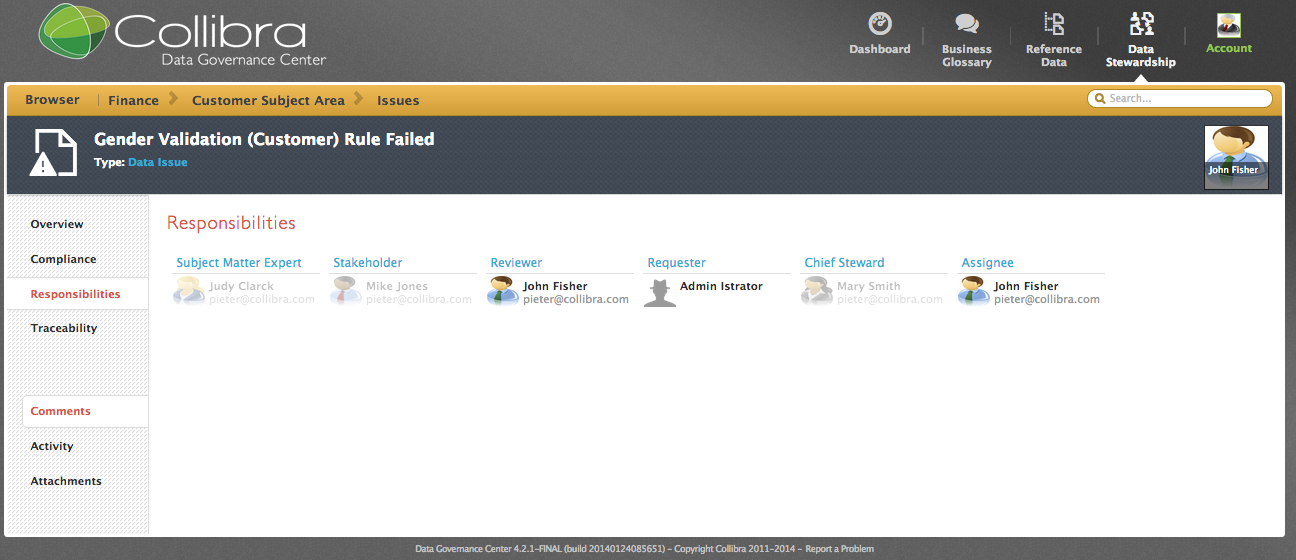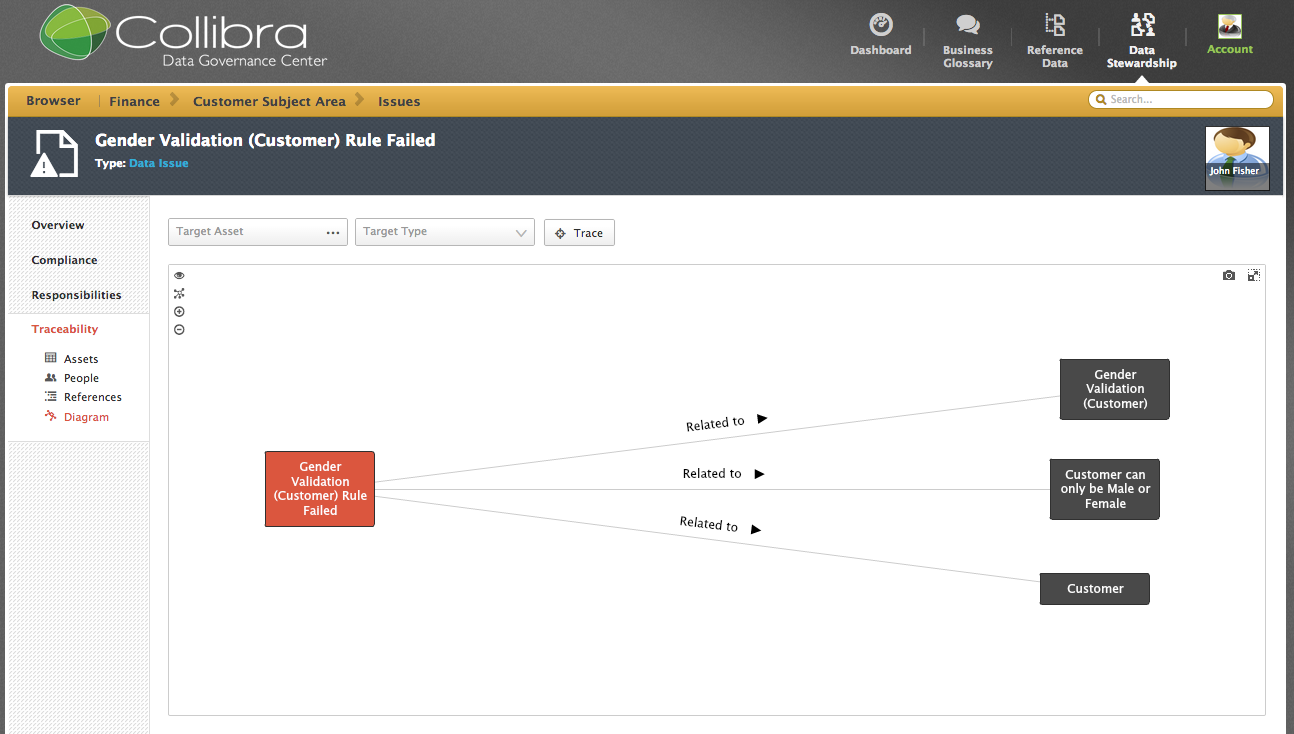Issue is a special Asset Type. Following screen shows the basic taxonomy for issue which you can find by searching for "Issue Classification Scheme".

We distinguish between three classes of Issue Types, from which you can choose to classify an issue when logging it.
- Issue Classification Scheme
- Data Definition Issue
- Definition Is Missing
- Definition not Clear
- Definition not Correct
- Data Policy Issue
- Policy Is Missing
- Policy non Compliance Issue
- Data Quality Issue
- Accuracy Issue
- Completeness Issue
- Conformity Issue
- Consistency Issue
- Duplication Issue
- Integrity Issue
- Data Definition Issue

As every Issue is in fact an Asset, it means that every Issue, just like any other Asset - has a name, a Status and a unique identifier (UUID). Following screen shows an example of an Issue with the name "Gender Validation (Customer) Rule Failed). Its status is "Under Review". The URL bar shows also the UUID-formatted identifier of the issue: "c5d3a802-66a3-4836-bf7f-4e214af55e35".

An issue has the following key roles involved, illustrated for the running example below:
- Requester, who requested the issue to be investigated (via the Dashboard "Log Issue" button)
- Reviewer, who reviews the validity of the issue request;
- Assignee, who is assigned to find a resolution for the issue.

Finally, an issue is usually related to a number of (data rule or policy violating) assets. For our running example, these include the rules "gender validation","customer can only be male of female", and the business term "customer". This is shown below by the traceability diagram of the issue.

For more on the logging and handling of issues, we refer to the Issue Management cookbook.